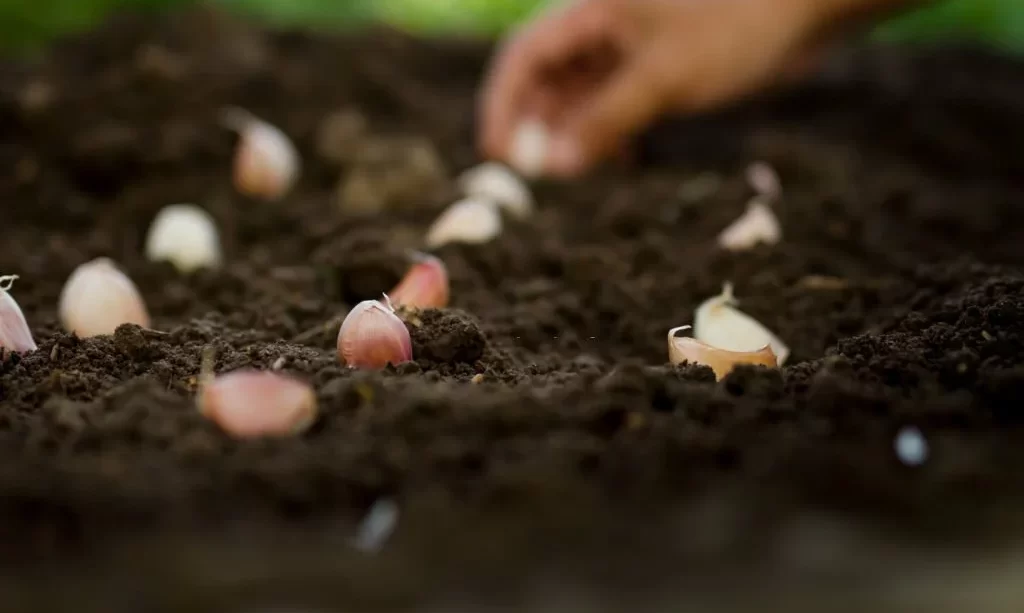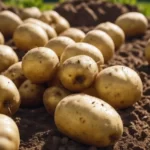Garlic is a staple in kitchens worldwide and is equally valued in home gardens, especially in North Carolina. Renowned for its culinary uses and health benefits, garlic is not only flavorful but also relatively easy to grow. The key to a successful garlic crop in North Carolina lies in understanding the right planting time and conditions. This article will guide you through the nuances of planting garlic in North Carolina, from choosing the right varieties to understanding the ideal planting schedule.
Garlic Varieties
When it comes to planting garlic in North Carolina, choosing the right variety is crucial. Garlic is generally categorized into two main types: hardneck and softneck.
- Hardneck Garlic: Known for their robust flavor, hardneck varieties do well in cooler climates. They produce a central stalk called a scape and typically have fewer but larger cloves. Varieties like ‘Music’ and ‘German Red’ are popular among North Carolina gardeners.
- Softneck Garlic: Softneck varieties are usually more heat-tolerant and thus well-suited to the varied North Carolina climate. They have more cloves per bulb and are known for their longer shelf life. Varieties like ‘California Early’ and ‘Silver Rose’ are common choices.
Best Planting Time for Garlic in North Carolina
The timing of planting garlic in North Carolina is essential to ensure a bountiful harvest:
- Fall Planting: In North Carolina, garlic is best planted in the fall, typically between late October and early November. This timing allows the garlic to establish roots before the winter.
- Importance of Cold Weather: Garlic needs a period of cold weather to properly develop bulbs. Planting in the fall ensures that the garlic cloves experience several weeks of cool temperatures.
- Spring Planting: While less common, spring planting is possible, especially for softneck varieties. However, spring-planted garlic may not develop bulbs as large as those planted in the fall.
Soil Preparation and Site Selection
Proper soil preparation and site selection are vital for growing healthy garlic in North Carolina:
- Soil Preparation: Garlic prefers well-drained, fertile soil with a neutral to slightly acidic pH. Before planting, amend the soil with organic matter, such as compost or well-rotted manure, to improve fertility and texture.
- Site Selection: Choose a location that receives at least six hours of direct sunlight per day. Good sunlight is essential for the development of strong bulbs. Ensure the site has good air circulation, which helps reduce the risk of fungal diseases.
- Weed Management: Clear the planting area of weeds, as garlic competes poorly with them. Starting with a weed-free bed will give your garlic the best chance for success.
Planting Process for Garlic
Planting garlic involves several key steps:
- Separating Cloves: Prior to planting, separate the garlic bulbs into individual cloves. Use only the largest and healthiest cloves for planting, as this will lead to larger bulbs.
- Planting Depth and Spacing: Plant cloves about 2 inches deep and 4 to 6 inches apart. If planting in rows, space the rows about 12 to 18 inches apart.
- Orientation: Plant the cloves with the pointed end facing up and the blunt root end facing down. This ensures that the garlic will grow in the correct direction.
- Mulching: After planting, apply a layer of mulch, such as straw or shredded leaves, to insulate the soil. Mulch helps regulate soil temperature, retains moisture, and suppresses weeds.
Caring for Garlic Post-Planting
Once the garlic is planted, proper care is essential:
- Watering: Water the garlic plants evenly to keep the soil moist, particularly during the spring as the bulbs are developing. Avoid overwatering, as garlic does not tolerate waterlogged conditions.
- Fertilizing: In early spring, apply a balanced fertilizer to provide nutrients for bulb growth. Garlic benefits from additional nitrogen in the early stages of growth.
- Scape Removal: For hardneck varieties, remove the scapes (flower stalks) as they appear in spring. Cutting off the scapes directs the plant’s energy into bulb development rather than flower production.
Harvesting and Storing Garlic
Knowing when and how to harvest garlic is crucial for ensuring the best quality and flavor:
- Harvesting Time: In North Carolina, garlic is typically ready for harvest in early to mid-summer. The right time to harvest is when several of the lower leaves have turned brown, but about five or six upper leaves are still green. For most varieties, this occurs around June or July.
- Harvesting Technique: Use a digging fork or a spade to gently lift the garlic bulbs out of the ground. Avoid pulling the garlic by the stalk, as this can damage the bulbs.
- Curing: After harvesting, cure the garlic by hanging it in a dry, well-ventilated area, out of direct sunlight, for several weeks. Curing allows the outer layers to dry out and form a protective covering for the bulbs, extending their shelf life.
- Storage: Once cured, store the garlic in a cool, dry place with good air circulation. Properly cured and stored garlic can last for several months.
Conclusion
Planting garlic in North Carolina can be a rewarding endeavor for both novice and experienced gardeners. By planting in the fall, preparing the soil properly, and providing the right care throughout the growing season, you can enjoy a successful garlic harvest. Whether used in cooking, for its health benefits, or simply for the joy of gardening, garlic is a wonderful addition to any North Carolina garden. With the right approach, you can grow robust, flavorful garlic that will enhance your culinary creations and perhaps even inspire you to expand your gardening ventures.




